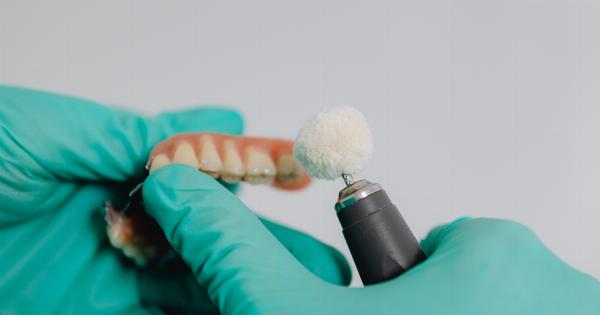Dental implants have revolutionized the field of dentistry by providing an aesthetically pleasing and functional alternative to missing teeth.
Whether you have lost a tooth due to trauma, decay, or natural causes, dental implants offer a long-term solution that can restore your smile and improve your oral health. This article will explore the benefits of dental implants, the implant procedure, the types of dental implants available, and answer commonly asked questions about this remarkable dental treatment.
The Benefits of Dental Implants
1. Enhanced Appearance: Dental implants look and feel like natural teeth, providing you with a confident and radiant smile. They are designed to merge seamlessly with your existing teeth, creating a cohesive and natural appearance.
2. Improved Functionality: Unlike traditional dentures that can slip or shift while eating or speaking, dental implants are fused directly to your jawbone, resulting in a stable and secure foundation.
This allows you to enjoy all your favorite foods without any discomfort or dietary restrictions.
3. Enhanced Oral Health: Dental implants do not rely on adjacent teeth for support, as traditional dental bridges do.
Therefore, your surrounding natural teeth remain untouched and unaffected, promoting better oral health and preventing potential issues that can arise from altering healthy teeth.
4. Durability and Longevity: Dental implants are built to last, often lasting a lifetime with proper care.
They are made from high-quality materials such as titanium, which is biocompatible and fuses with your natural bone, ensuring a strong and durable foundation.
5. Improved Speech: When teeth are missing, it can affect your ability to pronounce certain words and sounds correctly. Dental implants eliminate this concern, allowing you to speak with clarity and confidence.
The Dental Implant Procedure
1. Initial Consultation: The first step in the dental implant process is a thorough examination and consultation with a qualified dental professional.
This involves discussing your oral health history, conducting X-rays or CT scans to assess bone density, and determining your eligibility for dental implants.
2. Treatment Plan: Once deemed suitable for dental implants, a personalized treatment plan will be created.
This plan outlines the number of implants needed, the type of implant to be used, and any additional procedures required, such as bone grafting or tooth extraction.
3. Implant Placement: The dental implant procedure is typically performed under local anesthesia to ensure a comfortable experience. A small incision is made in the gum tissue, and a titanium post is surgically placed into the jawbone.
The gum tissue is then sutured, and a temporary crown or denture may be placed over the implant during the healing process.
4. Osseointegration: Over the next few months, the jawbone fuses with the implanted post through a process called osseointegration. This creates a stable foundation for the final restoration and ensures the longevity of the implant.
5. Final Restoration: Once the implant has fully integrated with the jawbone, an abutment is attached to the implant post. This abutment acts as a connector between the implant and the final restoration, which could be a crown, bridge, or denture.
The final restoration is custom-made to match the shape, size, and color of your natural teeth, providing a seamless and natural-looking result.
Types of Dental Implants
1. Endosteal Implants: These are the most common type of dental implants and involve the placement of titanium posts directly into the jawbone.
Endosteal implants are typically shaped like small screws and provide a sturdy foundation for the final restoration.
2. Subperiosteal Implants: These implants are placed on top of the jawbone but beneath the gum tissue. A metal framework is fitted onto the jawbone, and the posts protrude through the gums to support the restoration.
Subperiosteal implants are often recommended for patients with inadequate bone height or density.
Frequently Asked Questions About Dental Implants
1. Are dental implants painful?.
No, dental implant procedures are performed under local anesthesia, ensuring a pain-free experience. You may experience minor discomfort and swelling after the surgery, but this can be managed with over-the-counter pain medications.
2. How long do dental implants last?.
With proper care and maintenance, dental implants can last a lifetime. Regular dental check-ups, good oral hygiene practices, and avoiding habits such as smoking can contribute to the long-term success of dental implants.
3. What is the success rate of dental implant procedures?.
Dental implant procedures have a success rate of over 95%. However, this can vary depending on individual factors such as oral health, bone density, and adherence to post-operative care instructions.
4. Can anyone get dental implants?.
While dental implants are a viable treatment option for most individuals, certain medical conditions or habits such as smoking can affect the success of the procedure.
A thorough consultation with a dental professional will determine your eligibility for dental implants.
5. How long does the dental implant process take?.
The duration of the dental implant process can vary depending on individual factors. From the initial consultation to the placement of the final restoration, the entire process can take several months.
This allows for proper healing, osseointegration, and the fabrication of the final restoration.
Conclusion
Dental implants are a dazzling solution for teeth problems, offering numerous benefits such as enhanced appearance, improved functionality, and better oral health.
The implant procedure, which involves the placement of titanium posts into the jawbone, ensures a long-lasting and natural-looking result. With advancements in dental implant technology, individuals can regain their confidence, smile freely, and enjoy the many advantages that dental implants offer.






















